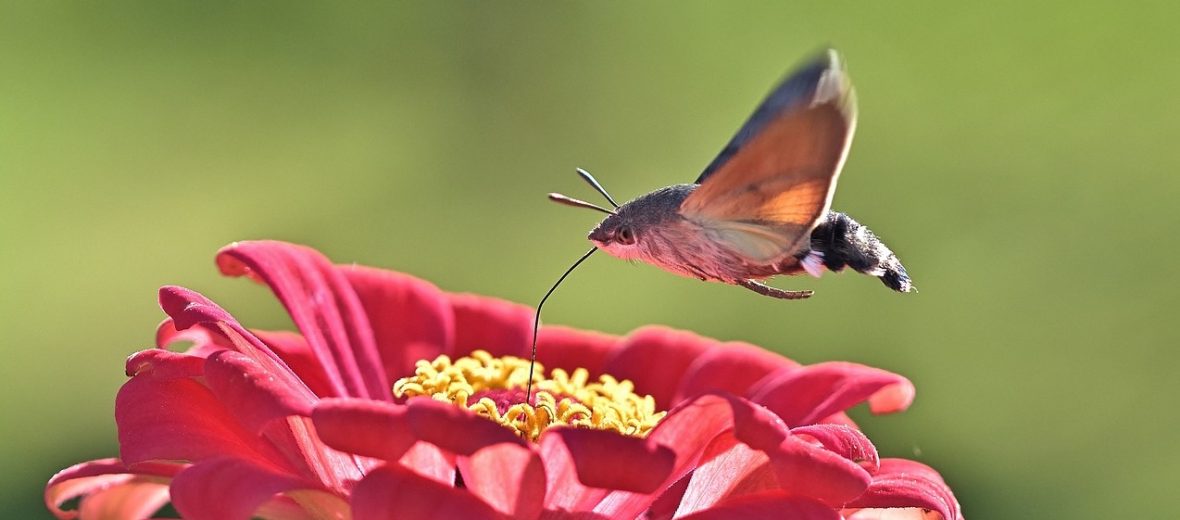
In an example of convergent evolution, the hummingbird hawk-moth hovers above flowers, like a hummingbird and gathers nectar throughout the day. These insects can be found throughout Europe, Asia, and northern Africa. There are approximately 1,700 species of hawk-moth. They prefer bushes, gardens, meadows, parks, and woodland edges. The hummingbird hawk-moth is not currently classified with the IUCN. Therefore, it is assumed that if they were classified, they would most likely be Least Concern or Data Deficient.
First the Stats…
Scientific name: Macroglossum stellatarum
Weight: Up to .2 ounce
Length: Up to 2 inches
Lifespan: Up to 7 months (adults)
Now on to the Facts!
1.) Not only do they have a proboscis (tongue) and can hover in mid-flight, but they also make a humming/buzzing sound, while flying, like a hummingbird.
2.) These moths are part of the sphinx moth family.
3.) Their preferred flowers are tube shaped or bell shaped.
4.) The most desired flower types are bedstraws, madders (Rubia), Centranthus, Epilobium, Rubiaceae, and Stellaria.
5.) They are not attracted to the color red, exclusively. Rather, they are simply attracted to tubular shaped flowers.
But wait, there’s more on the hummingbird hawk-moth!
6.) Up to 4 broods are produced in their lifetime.
7.) The eggs are up to .039 inch in diameter and look like their favored host plant, the Galium.
Did you know…?
They get the name sphinx moth because a sphinx moth caterpillar and the larva will rear up in a defensive posture, curling its head while the rest of its body stays flat. This resembles the sphinxes that guard the tombs in Egypt.
8.) Up to 200 eggs are laid at a time that hatch in up to 8 days.
9.) The hatchlings spend up to 20 days in the larval or caterpillar stage.
10.) Adult thoracic temperatures can reach over 113°F! This is near the limit for insect muscle activity and is the highest temperature of any other known hawk moth.
But wait, there’s still more on the hummingbird hawk-moth!
11.) These moths have trichromatic, or 3-color, vision and are able to discern flower types by not only shape, but color.
12.) To add to the naming confusion, people in both Europe and North America call other sphinx moths hummingbird moths. Hence why we use Latin names for naming critters.
13.) Bats, owls, mice, rats, spiders, and other birds of prey all look to make a meal out of these moths.
Now a Short Hummingbird Hawk-Moth Video!
Be sure to share & comment below! Also, check out the Critter Science YouTube channel. Videos added regularly!
Want to suggest a critter for me to write about? Let me know here.
Think you know a lot about critters? Try your hand at these fun, free quizzes:



